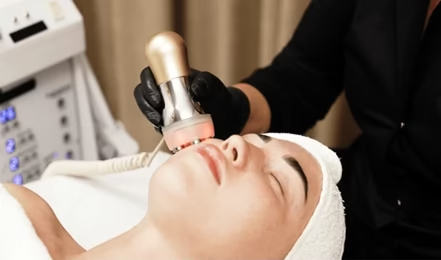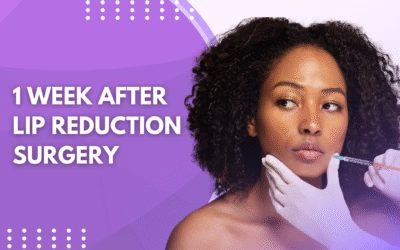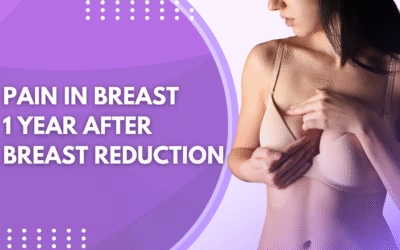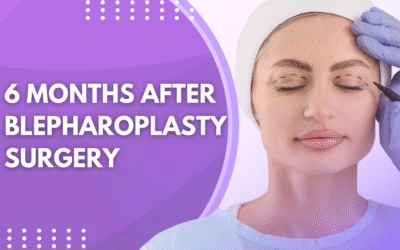
Anti-ageing Treatment in Mumbai
Ageing is a natural process, but its effects on the skin can make individuals self-conscious. Wrinkles, fine lines, sagging skin, and age spots can diminish confidence. Advanced anti-ageing treatments can address these issues by enhancing skin texture, firmness, and elasticity.
Dr. Viral Desai, a highly regarded plastic and cosmetic surgeon in Mumbai, notes, “Modern techniques offer non-invasive and minimally invasive options, helping patients achieve natural-looking results with minimal downtime.”
With over two decades of experience in aesthetic medicine, Dr. Desai is among the most preferred specialists for anti-ageing treatment in Mumbai. He offers customized solutions tailored to individual skin types and concerns to achieve a natural, rejuvenated appearance. With a reputation for precision and care, he ensures effective results, blending cutting-edge technology and personalized care.
Benefits of Anti-ageing Treatments
Reduction of Wrinkles and Fine Lines: Smooth wrinkles, crow’s feet, and expression lines for a youthful appearance.
Restoration of Volume: Injectable fillers can restore lost volume in areas like the cheeks, under the eyes, and around the mouth.
Non-invasive Option: Many treatments, such as Botox and dermal fillers, are non-surgical with minimal downtime.
Improved Skin Texture and Tone: Laser treatments and chemical peels enhance skin texture, making it smoother and more even.
Boosts Collagen Production: Some treatments stimulate collagen production, which helps maintain skin elasticity and firmness.
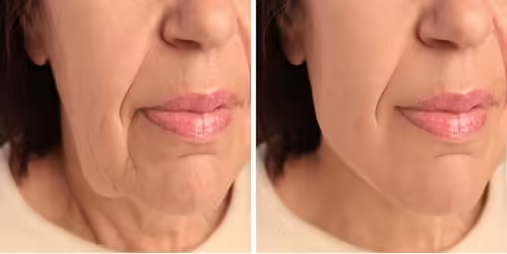
Enhances Natural Features: Subtle treatments can enhance facial contours without drastic changes, offering a natural look.
Minimal Recovery Time: Non-invasive procedures typically have little to no recovery time, allowing you to return to daily activities quickly.
Long-lasting Results: Many treatments provide long-term benefits, with results lasting for several months or even years.
Curious about the variety of treatments available? Let’s explore the different anti-ageing treatment options that suit your needs.
Types of Anti-ageing Treatments
Botox (Botulinum Toxin)

Botox is a popular injectable treatment used to reduce the appearance of wrinkles and fine lines. It works by temporarily relaxing the facial muscles that cause wrinkles, such as those around the eyes and forehead. The treatment is quick and non-invasive; results can last up to 4-6 months.
Dermal Fillers
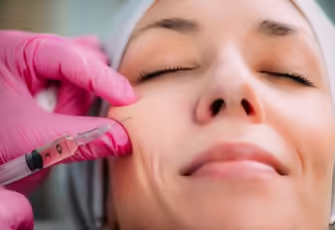
Dermal fillers restore volume and smooth out wrinkles. They are injected into the skin to plump areas that have lost volume, such as the cheeks, under the eyes, and around the mouth. Hyaluronic acid is the most common substance in dermal fillers, providing a natural, youthful look.
Thread Lifts

Non-surgical facelifts

Chemical Peels

It involves applying a chemical solution to the skin, which removes dead skin cells and stimulates new cell growth. This treatment helps improve skin texture, reduce pigmentation, and reduce fine lines. It can be customized to treat various skin concerns, from mild to severe signs of ageing.
Laser Skin Resurfacing

Laser treatments use focused light to remove damaged skin layers and stimulate collagen production. This treatment can reduce the appearance of wrinkles, fine lines, and age spots, improving skin texture and tone. It’s often used for deep wrinkles or severe sun damage.
Microneedling
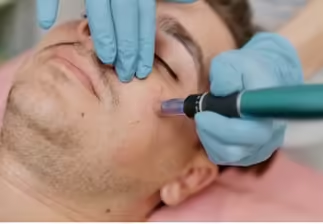
HIFU

Steps Involved in Anti-ageing Treatment
1. Consultation and Skin Assessment:
- Initial consultation with a dermatologist or cosmetic professional.
- Evaluation of skin type, concerns, and overall health.
- Discussion of treatment options based on individual needs and goals.
2. Pre-Treatment Preparations:
- Cleansing the skin to remove any makeup, oils, or impurities.
- Numbing the area (if required) to minimize discomfort during the procedure.
- Marking the treatment area for precise application (in some treatments).
3. Treatment Procedure:
- Administering the chosen treatment (e.g., injections, lasers, microneedling, etc.).
- Treatment duration can vary from 30 minutes to 2 hours, depending on the type of procedure.
4. Post-Treatment Care:
- Application of soothing creams or serums to calm the skin.
- Instructions for home care to ensure proper healing and maximize results.
5. Recovery and Downtime:
- Most treatments have minimal downtime, with minor redness or swelling that usually subsides within a few hours to days.
6. Follow-up Appointments:
- Follow-up visits to monitor results and ensure proper healing.
- Adjustments or touch-ups may be needed for optimal outcomes.
What to Expect After the Procedure
Immediate Results (for some treatments): Certain treatments, like injectable fillers, may show immediate results, while others may take a few days to manifest fully.
Mild Discomfort: Some treatments may cause slight discomfort or tenderness in the treated area, which generally subsides quickly.
Possible Swelling or Bruising: Swelling or bruising can occur, especially with injectable treatments like Botox or dermal fillers. These side effects are temporary.
Follow Care Instructions: For best results, follow the post-treatment instructions provided by your specialist, including using prescribed creams or avoiding certain activities.

Gradual Improvement: Results from specific treatments like laser resurfacing or microneedling may improve over time as the skin heals and rejuvenates.
Touch-Up Treatments (if necessary): Some treatments may require follow-up sessions or touch-ups to maintain or enhance results.
Risk and Complications
Infection: Any procedure involving injections or incisions carries a risk of infection. Proper aftercare and hygiene can minimize this risk.
Allergic Reactions: Some individuals may experience allergic reactions to injectable ingredients or topical products used during treatment.
Bruising and Swelling: Common side effects of injectable treatments like Botox or dermal fillers. Usually temporary, but may last longer in some cases.
Scarring: Though rare, there is a potential for scarring, especially with treatments like laser resurfacing or chemical peels.
Uneven Results: In some cases, the results of injectable fillers or Botox may be uneven, requiring additional treatments or adjustments to achieve symmetry.
Hyperpigmentation or Hypopigmentation: Some treatments, particularly laser therapies, may cause changes in skin pigmentation. This can be temporary but may persist in some cases.
Skin Sensitivity: Post-treatment, the skin may feel sensitive, tight, or irritated, especially with resurfacing treatments.
Aftercare for Anti-ageing Treatments
Avoid Touching the Treated Area: Refrain from touching or massaging the treated area for at least 24 hours to prevent infections or irritation.
Gentle Cleansing: Cleanse the treated area gently with mild soap and water. Avoid using harsh products or scrubbing the skin.
Avoid Makeup: Avoid applying makeup for the first 24-48 hours after injectable treatments or chemical peels to prevent irritation or infection.
Sun Protection: Always use sunscreen with a high SPF (30 or higher) to protect the skin from UV rays. Avoid direct sun exposure for a few days after treatment.
Limit Physical Activity: Avoid strenuous exercise for 24-48 hours to minimize swelling and bruising. Excessive sweating or heat can interfere with the healing process.
Stay Hydrated: Drink plenty of water to maintain skin hydration and support the body’s natural healing process.
Cold Compress: Apply a cold compress to reduce swelling or bruising, especially after injectable or laser treatments.
Follow Post-Treatment Instructions: Always follow any specific aftercare instructions provided by the professional performing the treatment for the best results.
Avoid Heat Exposure: Stay away from saunas, hot tubs, and other heat sources for at least 48 hours to prevent skin irritation or complications.
Monitor for Side Effects: Look for unusual symptoms, such as excessive swelling, redness, or pain. If any concerns arise, contact your specialist immediately.
Fill the form below to book an appointment
Dr. Viral Desai: Cosmetic and Plastic Surgeon in Mumbai

Dr Viral Desai is a board certified surgeon, M.Ch. (Masters Super-speciality Degree) and D.N.B. (Diplomate of National Board) in Cosmetic and Plastic Surgery.
Dr. Viral Desai is an acclaimed cosmetic and plastic surgeon celebrated for his expertise in hair transplantation, facial surgery, body contouring, breast lift, and surgical and non-invasive anti-ageing treatment in Mumbai. With extensive training, including an M.Ch. and DNB in Cosmetic and Plastic Surgery; he is known for his meticulous attention to detail and exceptional natural-looking results.
With a wealth of experience performing over 20,000 cosmetic procedures, Dr. Desai has positively impacted the lives of countless individuals, boosting their self-esteem and confidence through transformative surgeries. He is also an honourable member of the following medical associations:


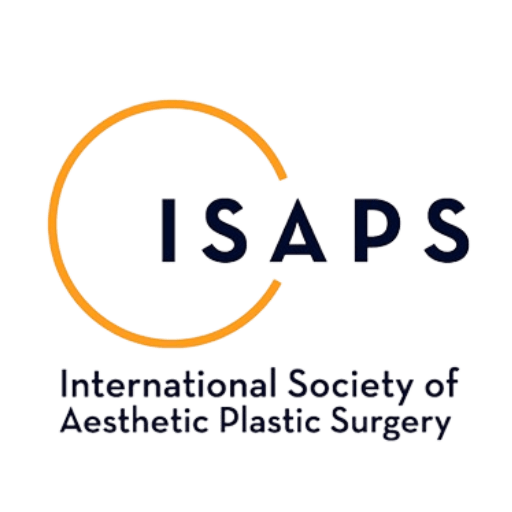
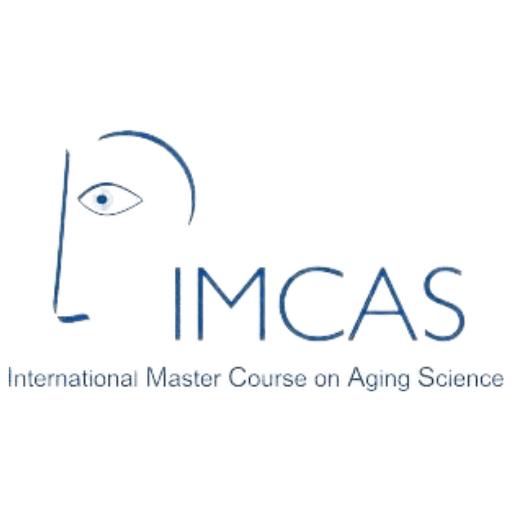
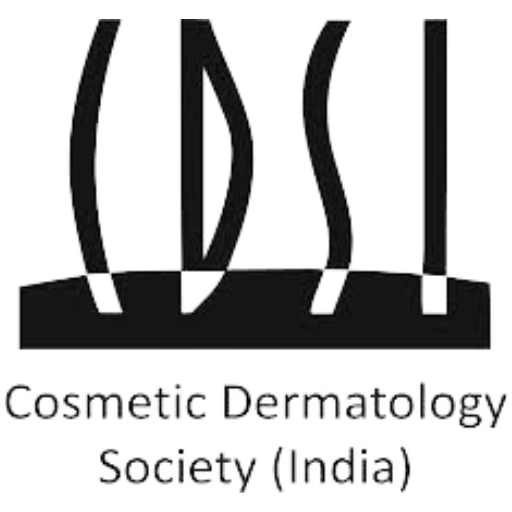




Case Studies
Case Study 1: Botox for Forehead Wrinkles
Patient: Mrs. Amruta, a 44-year-old woman
Concern: Deep forehead wrinkles and frown lines
Treatment: Botox injections
Background: Mrs. Amruta developed forehead wrinkles and frown lines due to ageing and frequent facial expressions. She sought a non-invasive solution to smoothen her skin and restore a youthful appearance.
Treatment Process: After an initial consultation with Dr. Viral Desai, Botox injections were recommended. Dr. Desai administered precise injections in the forehead and between the eyebrows, targeting the muscles responsible for creating these lines.
Outcome: Within a few days, Mrs. Amruta noticed a significant reduction in the depth of her forehead wrinkles. The results continued to improve over the next two weeks, with smoother, more relaxed skin. She was thrilled with the natural-looking results and minimal downtime.
Case Study 2: Laser Skin Resurfacing for Fine Lines and Pigmentation
Patient: Mrs. Madhurima, 52 years old
Condition: Fine lines, sun damage, and age spots
Treatment: Fractional CO2 Laser Skin Resurfacing
Background: Mrs. Madhurima, a 52-year-old woman, noticed increasing age spots, sun damage, and fine lines on her face. These signs of ageing were particularly visible around her cheeks and forehead. After a thorough examination, Dr. Viral Desai recommended fractional CO2 laser resurfacing to improve her skin texture and reduce pigmentation.
Treatment Process: The CO2 laser was used to target the damaged layers of skin, stimulating collagen production and improving skin tone. The procedure took about 45 minutes, and Mrs. Madhurima was given topical numbing cream to ensure comfort.
Outcome: Mrs. Madhurima was delighted with the results, as her skin appeared brighter and more youthful. Fine lines were visibly reduced, and age spots faded significantly. She noted a substantial improvement in her skin texture; the results lasted about 18 months. She is considering repeat treatments to maintain the improvement.
But don’t just take our word for it; let’s hear it from our happy clients!
Testimonials
“I had deep wrinkles on my forehead that made me look older and constantly tired. Dr. Viral Desai suggested dermal fillers, and I couldn’t be happier with the results. The procedure was quick and painless, and the results were so natural that my friends didn’t even realize I had anything done—they just said I looked refreshed! I’m so grateful for his expertise.”
— Meera S.
“I was struggling with deep smile lines that made me self-conscious about my smile. Dr. Desai explained my options in detail and performed a combination of fillers and skin-tightening treatments. The results are stunning—my face looks naturally smooth and youthful. I feel like I’ve turned back the clock by a decade!”
— Sudeep A.
“Years of sun exposure had left me with pigmentation and fine lines. Dr. Viral Desai tailored a treatment plan combining chemical peels and collagen-boosting therapies. My skin has never looked better—smooth, even-toned, and glowing! I highly recommend him to anyone looking for skin rejuvenation.”
— Ritika K.
Ready to take the first step toward younger-looking skin? Book your consultation today and start your journey to smoother, radiant skin!
Frequently Asked Questions:
What conditions can be treated with anti-ageing treatments?
Are the treatments safe?
How long do the results last?
What is the recovery time for anti-ageing treatments?
Do the results look natural?
Our latest post and updates
1 Week After Lip Reduction Surgery
Undergoing lip reduction surgery is a transformative experience, but the first week post-procedure is crucial for proper healing and optimal results. Patients often have questions about what changes to expect, how their lips will look, and how to care for them during...
Pain in Breast 1 Year After Breast Reduction
Experiencing pain in breast 1 year after breast reduction can be confusing, especially when most healing happens within the first few months. While many individuals enjoy long-term comfort after the procedure, some may still notice occasional discomfort, sensitivity,...
6 Months After Blepharoplasty Surgery
Reaching the milestone of 6 months after blepharoplasty surgery is exciting for many patients because this is when the final, refined results begin to appear. Blepharoplasty is a highly effective procedure that rejuvenates droopy eyelids, reduces puffiness, and...
